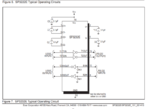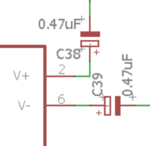Prabhakarankft
Member level 3

- Joined
- Jun 22, 2019
- Messages
- 54
- Helped
- 0
- Reputation
- 0
- Reaction score
- 4
- Trophy points
- 8
- Location
- Chennai, India
- Activity points
- 623
Hello Everyone,
Greetings. I have developed a circuit board with master slave concept. Master sending RS-232 Data( I am using SP-3232 DIP IC from Exar- Bought from Mouser). Slave just Receive the data. Most of time communication is fine. But sometime Communication is not happening
We are using 5 core Shielded cable which is in 4.5 Meter length.
1-----> 15VDC( 5A)
2----->GND
3-----> RX
4----->TX
5----->OE( To Enable Communication @3v3 Volt)
We are manufacturing this product more than a year. Out of 100 boards, 15 number of boards are making problems. If We change IC it is working for some times. I am wondering some time If I touch over the IC, communication is ok..
What would be the reason??
Environment is so simple. Just We have a AC motor( 3 Phase). Induction wise no problem I thing . Everything is properly earthed. To power up our Device We using Meanwell SMPS( NES-350-15)
Greetings. I have developed a circuit board with master slave concept. Master sending RS-232 Data( I am using SP-3232 DIP IC from Exar- Bought from Mouser). Slave just Receive the data. Most of time communication is fine. But sometime Communication is not happening
We are using 5 core Shielded cable which is in 4.5 Meter length.
1-----> 15VDC( 5A)
2----->GND
3-----> RX
4----->TX
5----->OE( To Enable Communication @3v3 Volt)
We are manufacturing this product more than a year. Out of 100 boards, 15 number of boards are making problems. If We change IC it is working for some times. I am wondering some time If I touch over the IC, communication is ok..
What would be the reason??
Environment is so simple. Just We have a AC motor( 3 Phase). Induction wise no problem I thing . Everything is properly earthed. To power up our Device We using Meanwell SMPS( NES-350-15)



